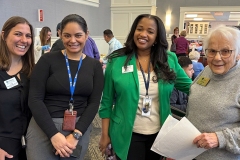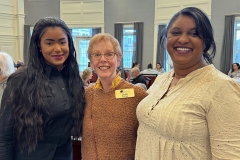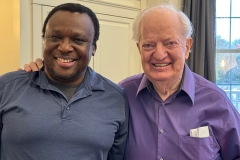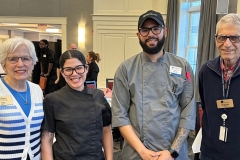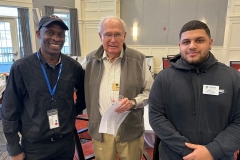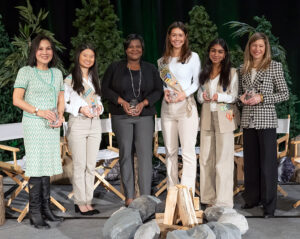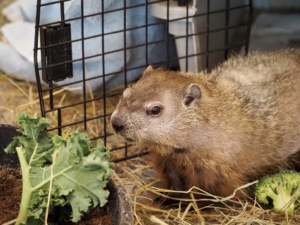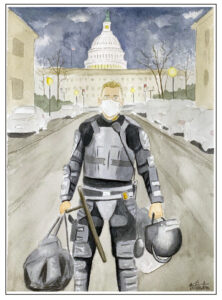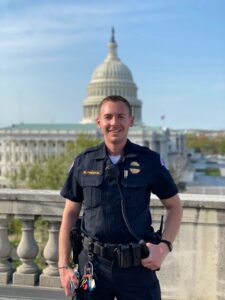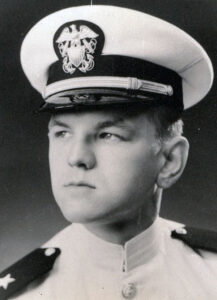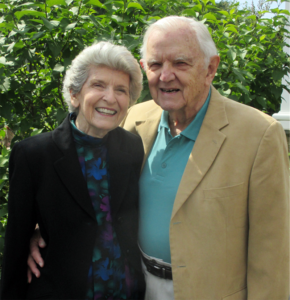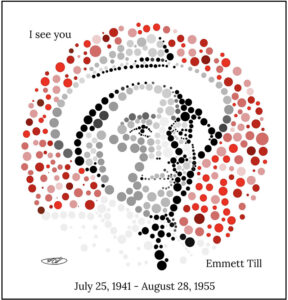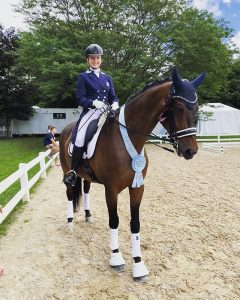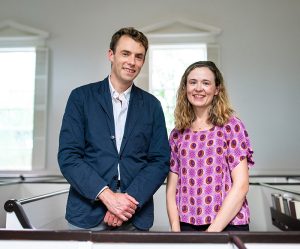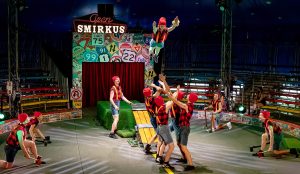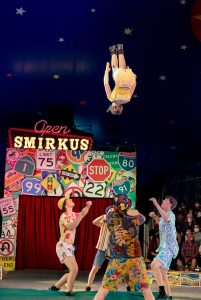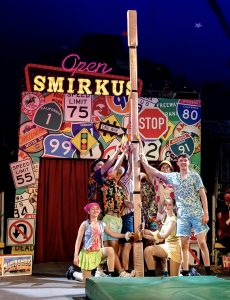(Editor’s note: This article is based partly on material supplied by Gabriella Pais of Montagne Powers.)
Retirement offers almost endless possibilities for how to spend one’s time—travel, golf, a new or renewed hobby — but seniors like Elaine Smith and other residents at The Commons in Lincoln are busy helping those who help them.
Smith is the founding member of RAMP, the Resident Associate Mentoring Program, where residents with skills, experience, and time are paired with Commons associates who need mentorship. Often, the employees work with resident mentors on English as a second language, but they offer other types of help as well.
RAMP is a voluntary program, but associates are paid for the work time they spend in their classes. An associate’s supervisor will direct them to RAMP if they are seeking assistance, at which point they’ll meet one on one with a mentor. Since its inception, about 40 residents have tutored an equal number of associates.
Smith and others started the program via FaceTime in 2021 during the Covid epidemic and later switched to in-person sessions. “When I looked around, I could see there were a lot of [residents] who were quite intelligent and had various expertise in the work world and otherwise. There were people who had a lot to give,” she said of her fellow residents. When they went to the head of Human Resources, “they were very much in favor of what we wanted to do.”
One supervisor who’s recognized the benefits of associate enrollment in RAMP is David Aviles, the campus plant operations director. An associate for whom David has seen positive outcomes for is Marcia Alves Xavier de Souza, the lead housekeeper of assisted living, memory care, and skilled nursing. Marcia has worked at The Commons since May 2021 and was promoted to supervisor after only six months. As a housekeeping leader, she must be able to both run an efficient team and advocate for herself and her colleagues, and speaking English more fluently allows her to meet those goals. Marcia and her ESL resident mentor have worked together in hour-long structured lessons that include homework.
De Souza’s first language is Portuguese; she understands English but is still learning to speak it more conversationally. She and her resident mentor have been working on her English speaking and writing skills for the past several months. “My teacher is very patient with me, and every Tuesday and Thursday I have my class,” she said. She’s also getting extra practice by sharing and strengthening her skills at home and in her church.
Aviles has seen great improvement in de Souza’s comprehension and use of English, and he understands the value that the program holds for someone in her role. “She is a very important part of the Plant Operations team. She has about nine to 10 employees under her that follow her direction,” he said. In fact, he feels enrollment in the program should be a required part of training for new associates who need assistance. “We have about five new hires and they’re all excited about this program,” he said.
While many associates enroll in RAMP to improve their English, mentors also help in other areas including legal forms, personal finance, and even piano lessons. In one case, RAMP helped a woman navigate the complex legal process required to become the guardian of her niece who was visiting from another country. Another associate recently earned their American citizenship thanks in part to help from RAMP.
“It felt like one of my kids had gotten into college — I was so happy,” said Smith, a retired Wellesley College chemistry professor.
Tutors, associates, and The Commons all benefit from RAMP. “It’s an example of how they feel about what’s being done for them,” she said as she displayed a heartfelt thank-you note from one associate. “You get a tremendous feeling of satisfaction in knowing that you’re helping someone who needs the help.”
The Commons in Lincoln held a celebratory luncheon for RAMP resident tutors and associates on March 19 prepared by RAMP associates. Click on image below for larger versions with captions.
